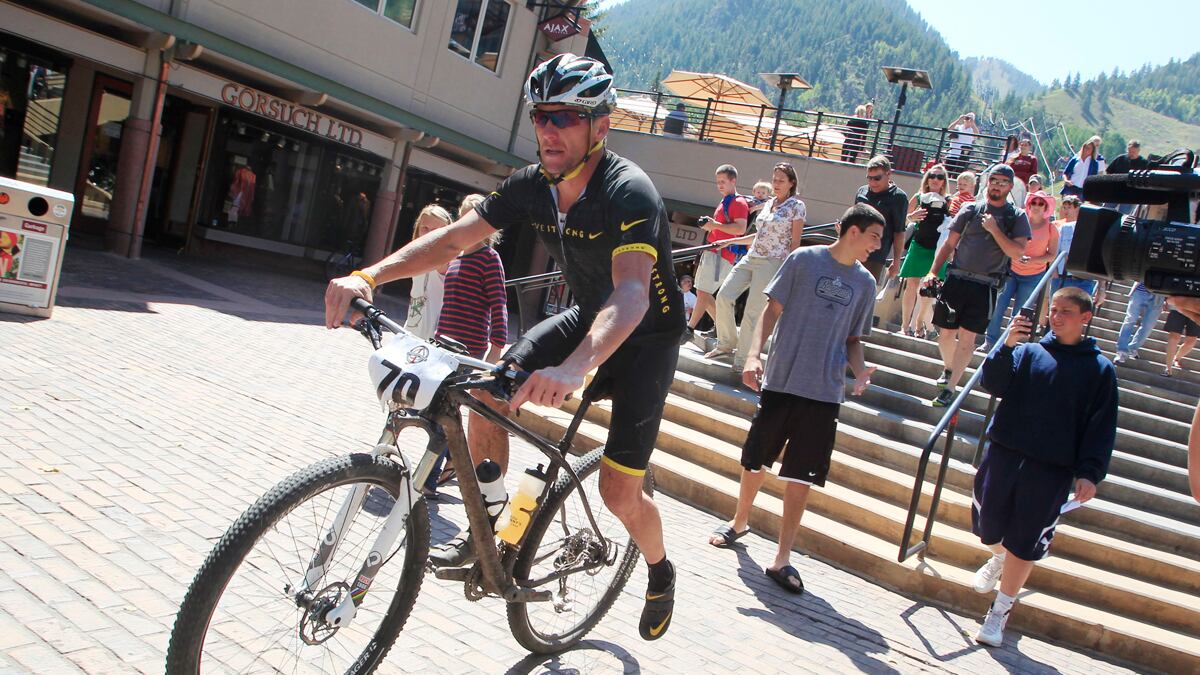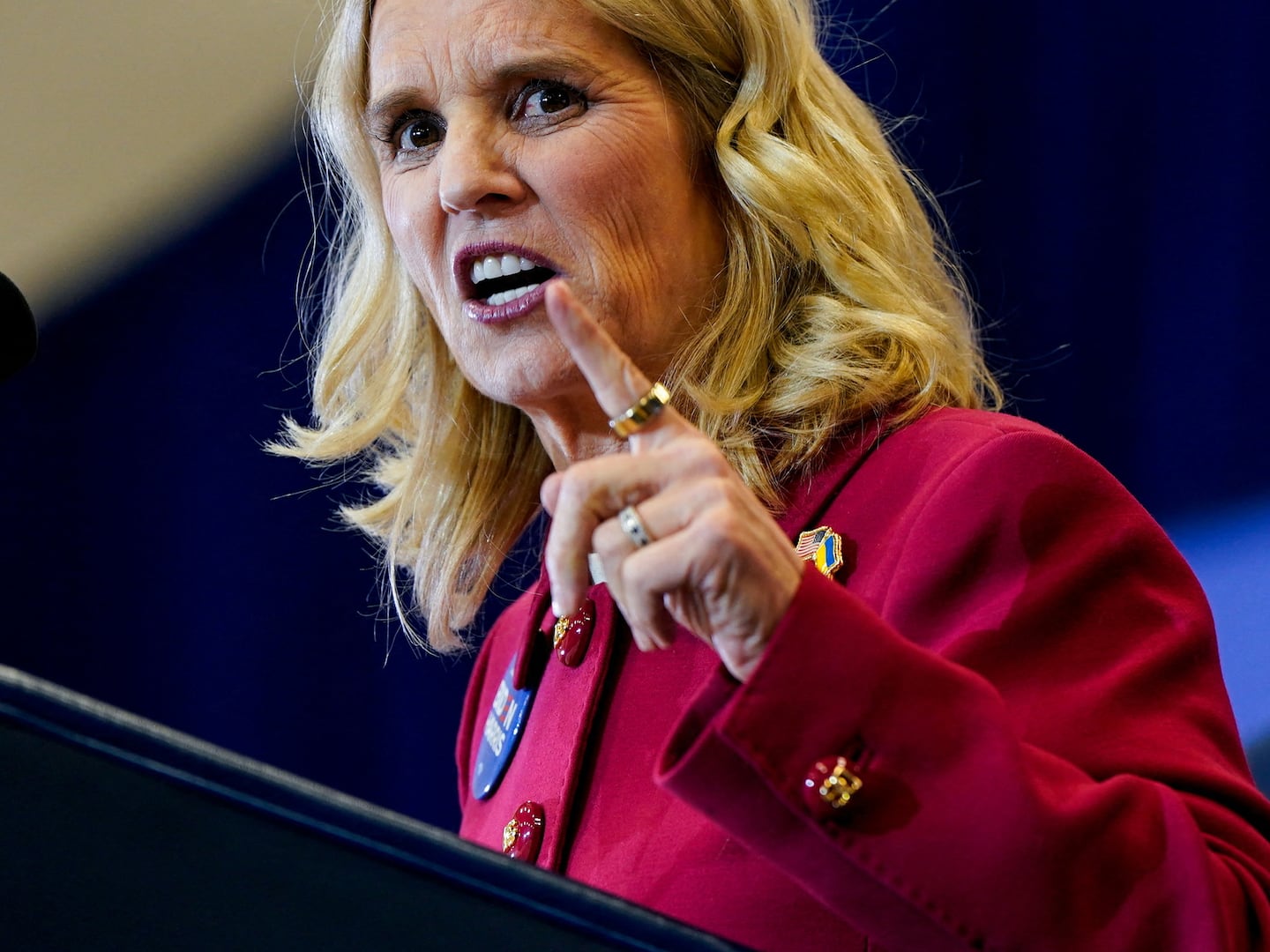“Lance Armstrong and his handlers engaged in a massive and long running scheme to use drugs, cover their tracks, intimidate witnesses, tarnish reputations, lie to hearing panels and the press and do whatever was necessary to conceal the truth,” the U.S. Anti-Doping Agency says in a just-released report that concludes the dramatic saga of accusations against cycling legend Lance Armstrong. Armstrong has already been relieved of his medals, but he’s probably not done vehemently defending his innocence. With 26 sworn witnesses, however, the USADA’s report on his alleged doping seems to leave little doubt that Armstrong used multiple performance-enhancing drugs and banned practices over the past two decades. The USADA calls the evidence against Armstrong “beyond strong; it is as strong as, or stronger than, that presented in any case brought by USADA over the initial twelve years of USADA’s existence.” Here’s the report’s most shocking findings.
1. A Deeper Relationship With Dr. Ferrari On many occasions, Armstrong denied having a close relationship with Dr. Michele Ferrari, an Italian cycling coach and doctor who had come under scrutiny for helping athletes obtain performance-enhancing drugs. In April 2010, Armstrong’s spokesman said the cyclist hadn’t had professional relationship with Ferrari in six years. But USADA investigators found that the pair continued to communicate through Ferrari’s son even after the cyclist publicly disavowed the doctor. (The report also lays out how Armstrong paid Ferrari more than $1 million between 1996 and 2006.)
Armstrong also denied encouraging his teammates to train with Ferrari, according to the report. Armstrong told investigators he never specifically told his colleagues to train with Ferrari, but instead told them to train smart. The USADA wasn’t buying it. Armstrong was a key player who “called the shots regarding who the team doctors were going to be,” the report states. Ferrari, the report also notes, went to USPS team training camps in the United States, Switzerland, and Spain. And several riders testified that Armstrong personally helped them to meet with Ferrari.
2. Teammates: His Wife Was InvolvedArmstrong’s then-wife Kristin was not exactly an innocent bystander, according to teammates and staff members. At one World Championships race in the Netherlands, Kristin was reportedly waiting in the tent of the U.S. riders with cortisone tablets wrapped in foil for Armstrong and his fellow cyclists. “One of the riders remarked, ‘Lance’s wife is rolling joints.’” A close friend and wife of another rider once asked Kristin what her feelings were about the banned performance-enhancer EPO, to which, according to the USADA, she replied, “It was a necessary evil.”
3. A ‘Playground Bully’ to Anti-Doping CyclistsArmstrong is known to be a powerful and domineering presence, but the testimony provided in the USADA’s report paints his character as mean, to the point of cruelty. At one point during the 1999 Tour de France, Armstrong caught up to Christophe Bassons, who was an outspoken anti-doper. Fellow cyclist Jonathan Vaughters remembers, “Lance did not like Basson’s outspokenness about doping, and Lance frequently made fun of him in a very merciless and venomous fashion, much like a playground bully.” According to the report, as they rode together during the Tour, Armstrong verbally attacked Bassons, “calling him a disgrace and telling him he should get out of cycling.” Such bullying of an anti-doping cyclist wasn’t an isolated incident, writes the USADA. During another ride, according to the report, he threatened Italian cyclist Filippo Simeoni for partaking in the court case against Dr. Ferrari, saying: “You made a mistake when you testified against Ferrari and you made a mistake when you sued me. I have a lot of time and money and I can destroy you.” Then, after cycling legend Greg LeMond criticized Dr. Ferrari, the USADA says Armstrong swore to “take him down” and make a call to the owner of a bike company that carried LeMond bikes that would “shut him up.”

4. He Made a Positive Test Result ‘Go Away’Did Armstrong pay to have a reprimand by the International Cycling Union disappear? Armstrong had apparently tested positive for EPO during the 2001 Tour of Switzerland but told teammates, according to the report, that he made the result “go away” by paying off the UCI, which serves as the governing body for competitive cycling. Cyclist Floyd Landis told the USADA that Armstrong said he flew to the UCI headquarters “and made a financial agreement to keep the positive test hidden.” The report points to a large contribution by Armstrong around the time, but the UCI denies it was intended as bribery.
5. Dr. Ferrari Used Olive Oil Laced With TestosteroneOne of the tricks Dr. Ferrari developed for delivering testosterone was to mix it with olive oil, according to the report. The concoction was simply known as the “oil,” which was squirted under the tongue to help boost recovery after races. Several riders, including Tyler Hamilton and Christian Vande Velde, testified to its use as part of a regular regimen to help keep their bodies in peak shape and ready to race.
6. Armstrong Doped During the Tour de FranceArmstrong and his teammates didn’t limit their illegal practices to before and after the cycling world’s epic Tour de France, writes the USADA. They were even using covert methods to boost performance during the Tour. At one point in the race, after a finished stage, the riders were being taken back to their hotel by bus. They convinced the driver to pretend to have engine trouble and stop on a mountain road for an hour so that the team members could have blood transfusions without the watchful eye of the testers, according to the report. Another sneaky tactic involved an assistant they all referred to as “motoman,” who would follow the tour on his motorcycle and pass off the illegal EPO drug to a staff member on the team, the USADA says.
7. The Saga of David ZabriskieDavid Zabriskie was a young cyclist who got into the sport to escape his father’s drug addiction. He began showing some promise in 2003, taking fifth place at race known as the Four Days of Dunkirk in May of that year. Not long after, he was summoned to a meeting at a café in Girona, Spain, with Johan Bruyneel and Dr. Luis Garcia del Moral, thinking the team leaders “might have important plans for him,” according to the report. Instead, they presented him with vials of a recovery substance and the banned oxygen booster EPO. Even though Zabriskie had lost his dad to drug addiction and had vowed to never use himself, he says he didn’t feel he could say no. “David was cornered,” the report states. “He had embraced cycling to escape a life seared by drugs and now he felt that he could not say no and stay in his mentor’s good graces…Thus began a new stage in David Zabriskie’s cycling career—the doping stage. Cycling was no longer David’s refuge from drugs. When he went back to his room that night he cried.”
Zabriskie wasn’t the only one who felt pressured to give in to doping at Armstrong’s pressure, says the USADA. Vande Velde recalls being summoned to Armstrong’s apartment to discuss his “role with the team.” In the USADA report, Vande Velde says, “The conversation left me with no question that I was in the doghouse and that the only way forward with Armstrong’s team was to get fully on Dr. Ferrari’s doping program.”
8. Team Doctor Smuggled in SalineThe report paints a coordinated and comprehensive plan that Armstrong and his team used not only to use performance-enhancing drugs but also to evade detection. The riders would often simply refuse to answer their door if a tester came by, the report states. They would also drop out of races if they had advance notice they might come under scrutiny. One of the most chilling anecdotes in the report revolves around the 1998 World Championships, where the team doctor smuggled saline past a tester that was setting up in their hotel room by hiding it under his raincoat. The saline, according to the report, was used to help hide any signs of rule-breaking by raising Armstrong’s blood count before the cyclist was made to give a blood sample.







